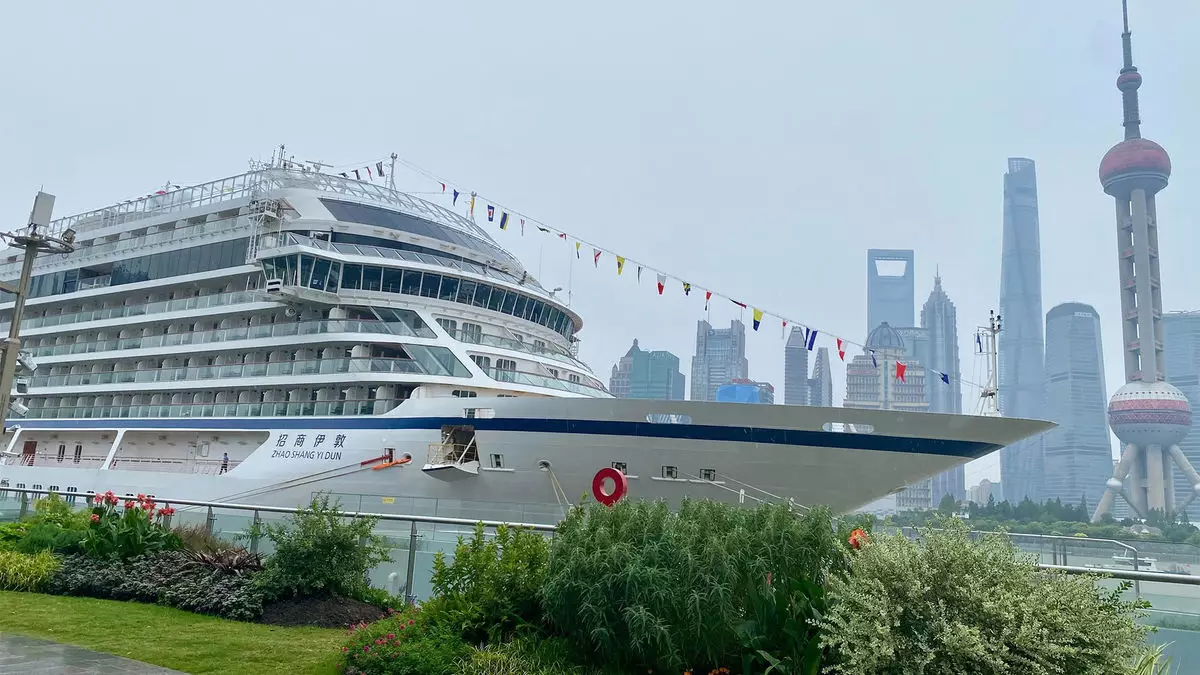In September 2023, Viking embarked on its first ocean cruise for English-speaking travelers in China, marking a significant milestone in the cruise industry. After a hiatus due to the pandemic, the Viking Sun, newly named the Yi Dun, set sail on an inaugural 10-day journey from Shanghai to Shenzhen (Hong Kong), alongside various other coastal ports. The venture is not merely a return to cruising but a thoughtful experiment aimed at bridging East and West in an industry traditionally dominated by different cultural expectations and preferences.
The initiative to launch cruises targeting English-speaking guests was borne out of Viking’s earlier foray into the domestic cruise market in China. Announced in 2019, a partnership with the state-owned China Merchants Group was the catalyst for this innovative approach. Viking strategically acquired the Viking Sun in 2021, cleverly reflagging it to explore lesser-visited Chinese ports, which were, until now, largely uncharted territories for foreign cruise lines. Destinations like Zhoushan, Dongtou, Pingtan Island, and Xiamen are now part of Viking’s exclusive offerings, presenting a rich tapestry of Chinese culture and heritage to Western travelers.
This venture comes during a cautiously optimistic period for inbound tourism in China, which has slowly rebounded since the pandemic’s most challenging days. While the demand remains just over half of what it was in 2019, Viking’s dual-focused itinerary taps into not only the growing wanderlust of Western tourists but also the domestic market. The Yi Dun will transition from its English-speaking cruises during the fall of 2025 to target local tourists from June to September 2025, demonstrating a savvy business model adaptable to shifting market dynamics.
One of the most significant aspects of this venture is the effort made to cater to both Eastern and Western tastes. Viking’s restaurant offerings aboard the Yi Dun showcase an eclectic mix. Dishes are designed to resonate with both cultural preferences; dim sum and Chinese street foods are complemented by traditional Western fare. The presence of coconut milk stations alongside typical Chinese accompaniments underscores the cruise line’s commitment to culinary inclusivity.
Mike Estill from the Western Association of Travel Agencies highlights the uniqueness of Viking’s approach, as this represents a pioneering attempt for an English-speaking cruise line to develop a China-only itinerary. The brand’s decision to make minor adjustments—such as allowing children aboard—exemplifies its attempt to cater to varying travel expectations while maintaining the signature Viking experience. Joost Ouendag, the vice president of product development, emphasized that the onboard experience would still feel familiar to North American guests, which speaks volumes about Viking’s understanding of its audience’s core preferences.
While Viking is optimistic about these newly formulated itineraries, the road ahead is not without challenges. The cultural nuances of the Chinese and Western families traveling together are extensive. For example, gambling onboard is less favorable among the Chinese guests than among many American tourists. Such differences pose questions about the ship’s design and amenities. With no onboard casinos, but instead featuring multiple pools, Viking has made a clear statement about aiming for broader appeal without alienating either demographic.
CEO Torstein Hagen’s comments on the gradual pace of this transition underscore the nuanced balancing act Viking is performing. As bookings remain within expectations, the long-term success of this endeavor will hinge on Viking’s adaptability in a fast-evolving market. The ship’s all-Chinese crew seems enthusiastic about engagement with guests, though the language barrier remains an area requiring attention.
The mixed strategy—fostering international tourism while also harnessing the local market—is a commendable and thoughtful approach that speaks to Viking’s strategic foresight. As leading travel figures note an uptick in interest towards China, Viking’s positioning appears prudent, as Alex Sharpe explains. The craft of hospitality awaits to be tested on this grand stage, where cultural distinctions serve both as hurdles and stepping stones for cross-cultural dialogue.
Viking’s Yi Dun represents more than just an ocean cruise; it symbolizes a brave attempt at fostering a cultural exchange that could redefine cruising in China. As travelers embark on these voyages, they contribute to the larger narrative of tourism’s evolution in a post-pandemic world. The Yi Dun’s journey into the unknown holds promises—not just trips across geographic locations but of building bridges across cultures.


Napsat komentář